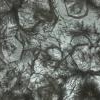Well, there goes the neighborhood lol.
Solenopsis invicta have now taken over part of the main road inside the complex (where the office/store is). Three large mounds, connected to each other. They are a one queen per mound species, but have many mounds all connected to a supercolony I guess of a sort. They even kicked out the Argentine ants in that area, when there used to be many thousands of them. I don't know if S.invicta are worse than Argentine ants. They are MUCH cooler and by far more fun to watch, unlike the most boring ant ever, Argentine ants. But, S.invicta have a nasty sting and more aggressive. But at least they aren't boring as watching paint dry.
Also Monomorium ergatogyna have been spreading everywhere, after I introduced them earlier this year. They all came from my one single colony I introduced, because they never were here before that. They are native, but they spread VERY fast. In less than a year are from my apartment unit, all the way down to the exit of the complex. They are also around the river area too. I can't believe one colony spread that fast in that short of time. The entire complex has small, medium and large colonies of M. ergatogyna. Very interesting.
Pheidole megacephala are all pretty much gone now too. I see tons of dead workers from both the poison and the Argentine ants invading them. They are pretty much wiped out, and like I said, probably a good thing. Though, I'd rather have those than Solenopsis invicta and Argentine ants. Oh well.


















